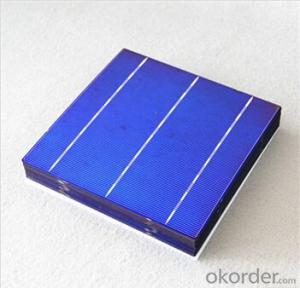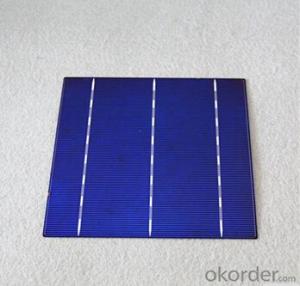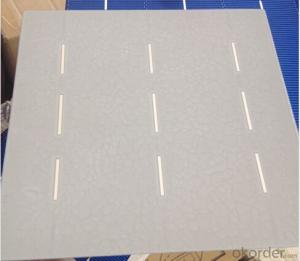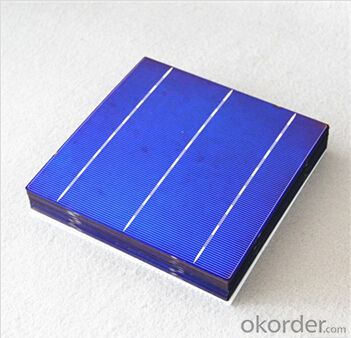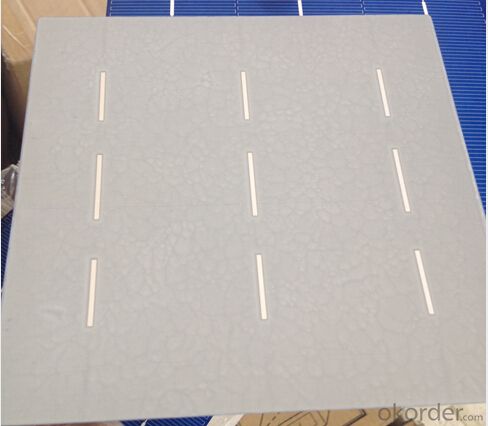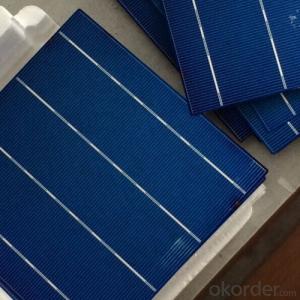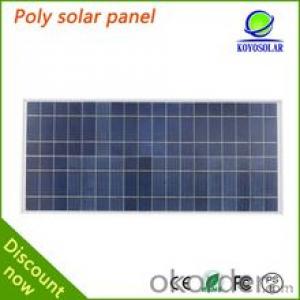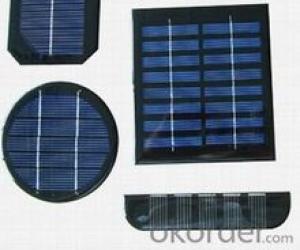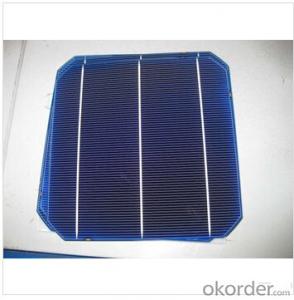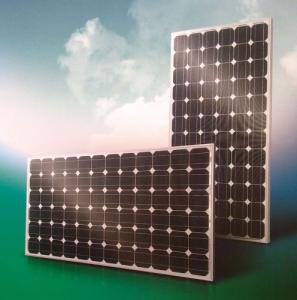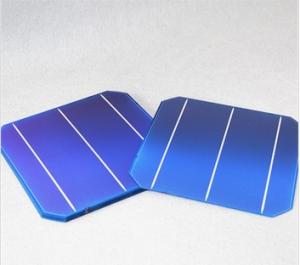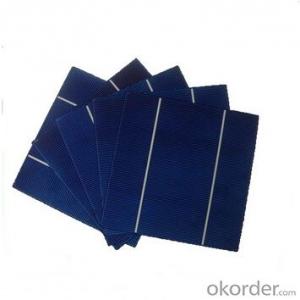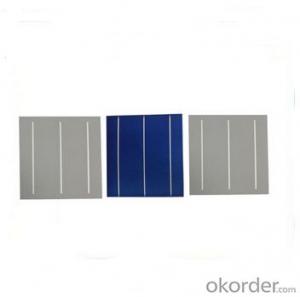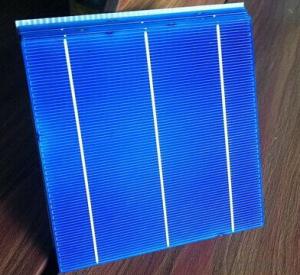Nanomaterials Solar Cells - Polycrystalline A Grade High Efficiency 3BB 156*156mm
- Loading Port:
- Shanghai
- Payment Terms:
- TT or LC
- Min Order Qty:
- 5000 pc
- Supply Capability:
- 8000000 pc/month
OKorder Service Pledge
OKorder Financial Service
You Might Also Like
Polycrystalline Silicon Solar Cells:
Solar cells is made by solar wafer, it has three categories of solar cell right now, monocrystalline polycrystalline and thin film,These cells are entirely based around the concept of ap-n junction, which is the critical part of solar module, it is the part that can convert the light energy into electricity, the thickness is from 180um to 200um, with even busbars to conduct electricity, textured cell can decrease diffuse reflection; they are often electrically connected and encapsulated as a module. Photovoltaic modules often have a sheet of glass on the front (sun up) side, allowing light to pass while protecting semiconductor wafers from abrasion and impact due to wind-driven debris, rain, hail, etc. Solar cells are also usually connected in series in modules, creating an additive voltage. Connecting cells in parallel will yield a higher current;With high quality and stable quality. Our Cells can greatly improve the performance of Solar Modules.
Features
1.High conversion efficiency resulting in superior power output performance.
2.Outstanding power output even in low light or high temperature conditions
3.Optimized design for ease of soldering and lamination
4.Long-term stability,reliability and performance
5.Output power tolerance of +/-3%
Specification:
Mechanical data and design |
Format - 156 mm × 156 mm ± 0.5 mm |
Thickness- - 200 μm ± 20 μm |
Front (-) - 1.4 mm bus bars (silver),blue anti-reflection coating (silicon nitride) |
Back (+) - 2 mm wide soldering pads (silver) back surface field (aluminium) |
Temperature Coefficient of Cells |
Voc. Temp .coef.%/K -0.364%/K |
Isc . Temp .coef.%/K +0.077%/K |
Pm. Temp. coef.%/K -0.368%/K |
Efficiency code | Efficiency(%) | Pmax(w) | Impp(A) | Vmpp(V) | Isc(A) | Voc(V) |
182 | ≥18.20 | 4.43 | 8.26 | 0.536 | 8.71 | 0.634 |
180 | 18.0-18.2 | 4.38 | 8.22 | 0.533 | 8.68 | 0.632 |
178 | 17.8-18.0 | 4.33 | 8.17 | 0.530 | 8.63 | 0.630 |
176 | 17.6-17.8 | 4.28 | 8.12 | 0.527 | 8.60 | 0.627 |
174 | 17.4-17.6 | 4.23 | 8.08 | 0.524 | 8.56 | 0.625 |
172 | 17.2-17.4 | 4.19 | 8.05 | 0.521 | 8.53 | 0.622 |
170 | 17.0-17.2 | 4.14 | 7.99 | 0.518 | 8.49 | 0.620 |
168 | 16.8-17.0 | 4.09 | 7.94 | 0.515 | 8.45 | 0.618 |
Intensity Dependence |
Intensity [W/m2] Isc× [mA] Voc× [mV] Pmpp |
1000 1.00 1.000 1.00 |
900 0.90 1.000 0.90 |
800 0.80 0.99 0.80 |
500 0.50 0.96 0.49 |
300 0.30 0.93 0.29 |
200 0.20 0.92 0.19 |
IV Curve

Solar Panel Images:
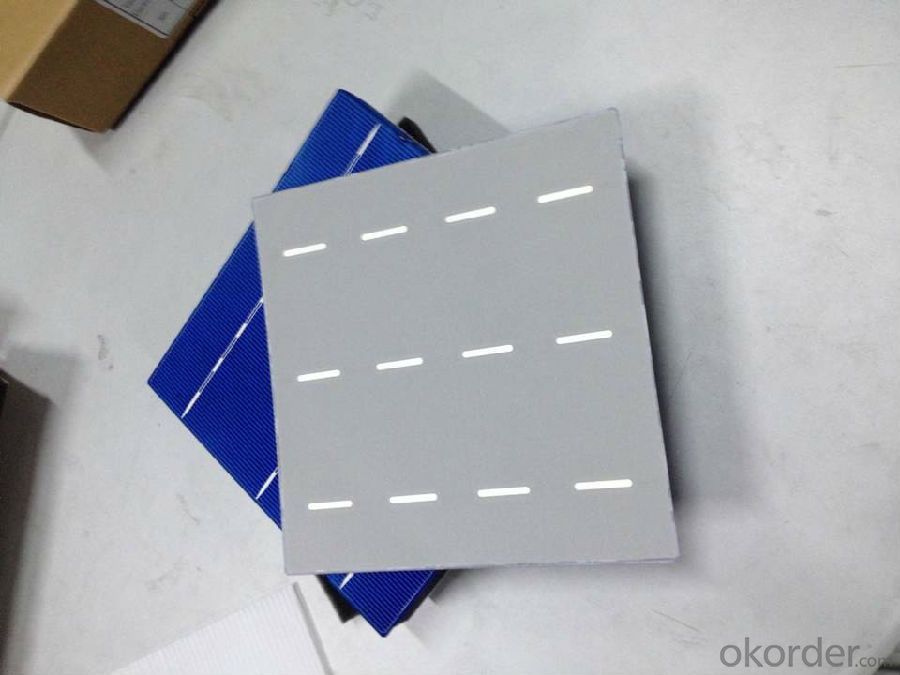
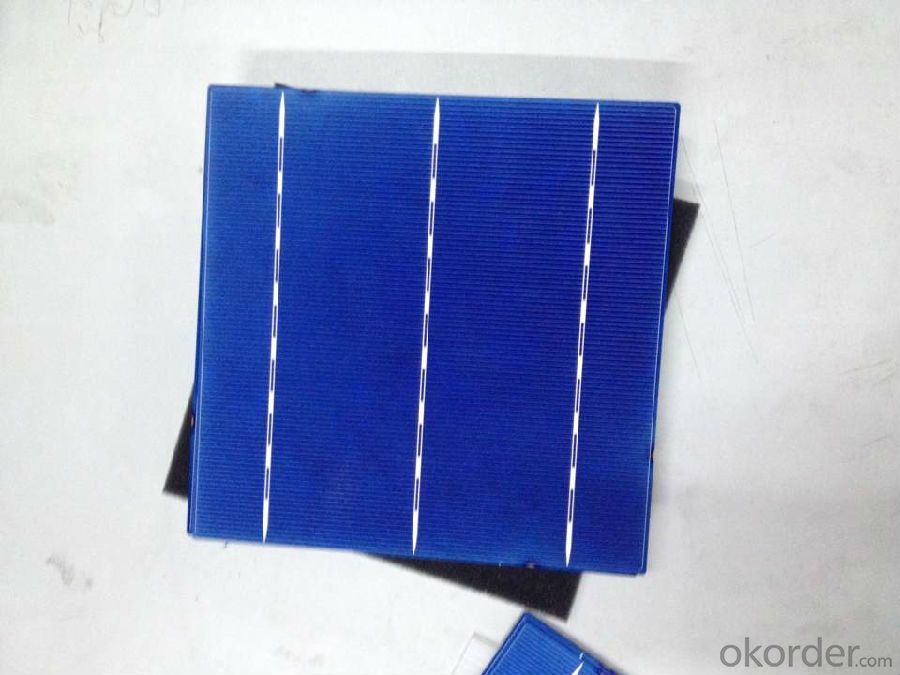
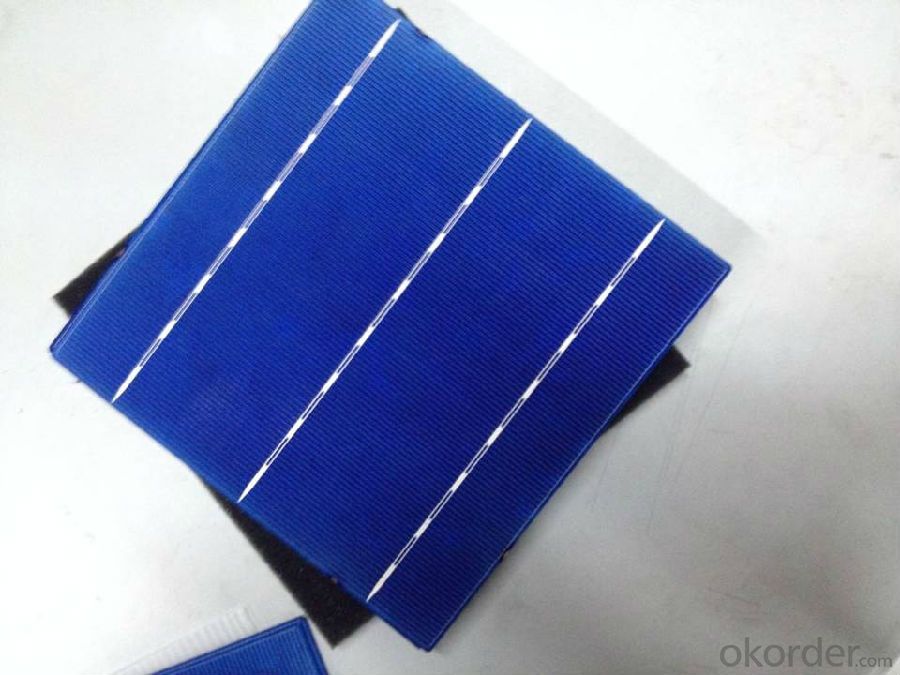
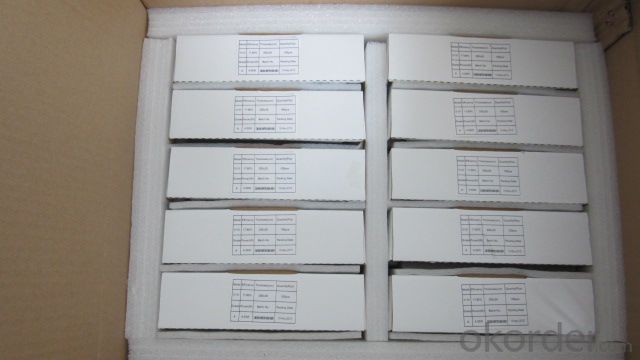
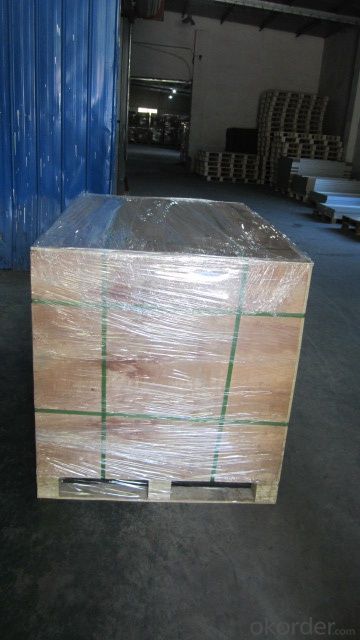
Packaging & Delivery of Polycrystalline Solar Cells
Carton Box Package and Deliver by air. It should be noticed that it should be avoid of water, sunshine and moist.
FAQ
We have organized several common questions for our clients,may help you sincerely:
①What price for each watt?
It depends on the efficiency of the solar cell, quantity, delivery date and payment terms.
②How long can we receive the product after purchase?
In the purchase of product within three working days, We will arrange the factory delivery as soon as possible. The pecific time of receiving is related to the state and position of customers.Commonly 7 to 10 working days can be served.
③Can you provide the peripheral products of the solar panels, such as the battery, controller, and inverter? If so, can you tell me how do they match each other?
Yes, we can, we have two companies for solar region, one is CNBM International, the other is CNBM engineering Co.
We can provide you not only the solar module but also the off grid solar system, we can also provide you service with on grid plant.
④What is your warranty of solar cell?
Our product can promise lower than 0.3% open box crack, we support claim after opening the box if it has crackm color difference or sth, the buyer should give pictures immediately, we can not accept the claim after the solar cell has assembled to solar panel.
• Timeliness of delivery
• ⑤How do you pack your products?
We have rich experience on how to pack the solar cell to make sure the safety on shipment, we could use wooden box or pallet as buyer's preference.
⑥ Can you do OEM for us?
Yes, we can.
Space solar power station in space means that solar energy will be converted into electrical energy, transmission by wireless energy transmission to the ground, or simply to reflect sunlight to the ground, on the ground power systems. In the present research the United States, Russia, Japan and other countries. Its development prospects are very promising.
Characteristics of Space Solar Cells
The greatest feature of this system is green. Collect solar energy in space, the impact on the global environment is small and completely dependent on the earth's resources.
To build solar power plants in the ground, due to the influence of atmospheric absorption and scattering effects of sunlight to the ground after strong attenuation to 1.0 kW / square meter; and if the establishment of the space solar power station, the light intensity of 1.353 kilowatts / square meters, and 99% time of day, and therefore has a high power generation efficiency.
While the power generation efficiency space solar power plant is far above the ground. Continuously receiving solar energy from space cannot be affected by the season, such as diurnal variation, receiving high energy density, it is 7-12 times the average light power of the ground; while stably transmit energy to the ground, basically from the atmosphere.
Space Station on the technical principles has been no problem. Solar panels widely used in satellites, but in recent years, the power generation efficiency of solar cells, the conversion efficiency of microwave technology has made great progress, has laid a good foundation for the development of the system. But to achieve the industry standard applications, the requirements for power generation will be high, at least megawatts, G watt magnitude; solar panels may use to calculate the square.
- Q: What is the role of grounding systems in solar cell systems?
- The role of grounding systems in solar cell systems is to provide a safe path for electrical currents to flow, ensuring the protection of both the solar panels and the users. Grounding systems help to dissipate any excess electrical energy, preventing damage to the system and reducing the risk of electrical shocks or fires. Additionally, grounding systems aid in the proper functioning of protective devices such as fuses and circuit breakers, allowing for quick detection and isolation of electrical faults. Overall, grounding systems play a crucial role in maintaining the safety and reliability of solar cell systems.
- Q: What is the impact of maintenance and cleaning on solar cell performance?
- Maintenance and cleaning play a crucial role in maintaining optimal solar cell performance. Regular maintenance, such as inspecting and tightening connections, ensures the efficient functioning of the solar system, thereby maximizing energy production. Additionally, cleaning solar panels from dust, dirt, and debris helps to increase sunlight absorption and prevent shading, enhancing overall performance and energy output.
- Q: Can solar cells generate electricity during a blackout?
- No, solar cells cannot generate electricity during a blackout because they rely on a connection to the power grid to operate.
- Q: We are currently promoting our one of our solar cells seriers, which is the 156mmx156mm 6inch,2BB/3BB polycrystalline/multi solar cells,mono solar cell,made in Taiwan/Germany, please feel free to contact me if any interest.
- Sounds interesting, how about the price and order requirements for this kind of solar cell?
- Q: Can solar cells be used in public charging stations for electric vehicles?
- Yes, solar cells can be used in public charging stations for electric vehicles. Solar panels can generate electricity from sunlight and convert it into usable energy to charge electric vehicles, making them a sustainable and environmentally-friendly option for public charging infrastructure.
- Q: I know that solar cells are produced by DC and then converted into alternating current through the inverter, who explains why the solar cell is produced by DC?
- The sun is irradiated on the semiconductor p-n junction to form a new hole-electron pair. Under the action of the p-n junction electric field, the holes flow from the n region to the p region.
- Q: Can solar cells be used for powering communication systems?
- Yes, solar cells can be used to power communication systems. Solar cells convert sunlight into electrical energy, which can then be used to power various electronic devices, including communication systems. This renewable source of energy is a sustainable and environmentally friendly option for powering communication systems, especially in remote or off-grid locations where access to traditional power sources may be limited.
- Q: Can solar cells work in cloudy weather?
- Yes, solar cells can still generate electricity in cloudy weather, although their efficiency may be reduced. Cloud cover reduces the amount of direct sunlight reaching the solar panels, resulting in lower power output compared to sunny conditions. However, modern solar technologies, such as thin-film solar cells, are capable of generating electricity even in low-light conditions, making them suitable for use in areas with frequent cloud cover.
- Q: How do solar cells perform in areas with extreme temperature fluctuations?
- Solar cells generally perform well in areas with extreme temperature fluctuations. While high temperatures can slightly reduce their efficiency, modern solar cell designs are often equipped with cooling mechanisms to mitigate this issue. Additionally, solar cells are tested and designed to withstand temperature variations, including freezing temperatures. Overall, solar cells are designed to be robust and reliable in varying climates, allowing them to generate electricity efficiently even in areas with extreme temperature fluctuations.
- Q: Can solar cells be used to power homes?
- Yes, solar cells can be used to power homes. Solar photovoltaic (PV) systems convert sunlight into electricity, which can then be used to power various appliances and lighting in households. These systems typically consist of solar panels installed on rooftops or other sunny areas, along with inverters and batteries to store excess energy for use during non-sunny periods or at night. With advances in technology and decreasing costs, solar power has become an increasingly viable and sustainable option for homeowners to generate their own electricity.
Send your message to us
Nanomaterials Solar Cells - Polycrystalline A Grade High Efficiency 3BB 156*156mm
- Loading Port:
- Shanghai
- Payment Terms:
- TT or LC
- Min Order Qty:
- 5000 pc
- Supply Capability:
- 8000000 pc/month
OKorder Service Pledge
OKorder Financial Service
Similar products
Hot products
Hot Searches
Related keywords
